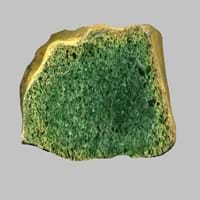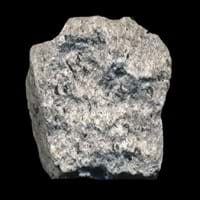Definition
Jadeitite is a metamorphic rock usually found in blueschist grade metamorphic terrains
Porphyry is a reddish-brown to purple igneous rock containing large phenocrysts of various minerals embedded in a fine-grained matrix
Discoverer
Unknown
Unknown
Etymology
From pyroxene mineral jadeite
From Old French porfire, from Italian porfiro and in some cases directly from Latin porphyrites
Class
Metamorphic Rocks
Igneous Rocks
Sub-Class
Durable Rock, Medium Hardness Rock
Durable Rock, Hard Rock
Group
Not Applicable
Plutonic
Other Categories
Fine Grained Rock, Opaque Rock
Fine Grained Rock, Opaque Rock
Texture
Earthy
Porphyritic
Color
Black, Brown, Colourless, Green, Grey, White
Black, Brown, Colourless, Green, Grey, Red, Rust, White
Durability
Durable
Durable
Appearance
Rough and Dull
Dull
Interior Uses
Decorative Aggregates, Homes, Interior Decoration
Decorative Aggregates, Interior Decoration
Exterior Uses
Garden Decoration, Office Buildings, Paving Stone
Garden Decoration, Paving Stone
Other Architectural Uses
Curbing
Curbing
Construction Industry
As Dimension Stone, Cutting Tool, Knives
Construction Aggregate
Medical Industry
Not Yet Used
Not Yet Used
Antiquity Uses
Artifacts, Jewellery, Monuments, Sculpture
Artifacts, Monuments, Sculpture
Commercial Uses
Commemorative Tablets, Creating Artwork, Jewelry
Creating Artwork, Gemstone, Jewelry
Types
Not Available
Rhomb Porphyry
Features
Host Rock for Lead
Generally rough to touch, Is one of the oldest rock, Surfaces are often shiny
Archaeological Significance
Famous Monuments
Data Not Available
Data Not Available
Famous Sculptures
Data Not Available
Data Not Available
Pictographs
Used
Not Used
Petroglyphs
Used
Not Used
Formation
Due to change in environmental conditions, rocks are heated and pressurized deep inside the Earth's surface. Jadeitite is formed from the extreme heat caused by magma or by the intense collisions and friction of tectonic plates.
Porphyry is formed in two stages: the magma cools slowly deep within the crust or the magma is cools rapidly as it erupts from a volcano, creating small grains that are usually invisible to naked eye.
Mineral Content
Carbonate, Magnetite, Pyrrhotite, Serpentine, Sulfides
Biotite, Chert, Feldspar, Garnet, Graphite, Quartz, Silica
Compound Content
Ca, CaO, Carbon Dioxide, KCl, MgO, Sulfur Dioxide, Sulphur
Aluminium Oxide, CaO, Iron(III) Oxide, Potassium Oxide, MgO, Sodium Oxide, Silicon Dioxide, Titanium Dioxide
Types of Metamorphism
Cataclastic Metamorphism, Contact Metamorphism, Regional Metamorphism
Burial Metamorphism, Cataclastic Metamorphism, Contact Metamorphism, Hydrothermal Metamorphism, Impact Metamorphism, Regional Metamorphism
Types of Weathering
Not Applicable
Biological Weathering, Chemical Weathering, Not Registered
Types of Erosion
Coastal Erosion, Water Erosion, Wind Erosion
Chemical Erosion, Coastal Erosion, Glacier Erosion
Grain Size
Very fine-grained
Fine Grained
Fracture
Uneven
Irregular
Streak
White, Greenish White or Grey
White
Porosity
Less Porous
Less Porous
Luster
Waxy and Dull
Dull
Compressive Strength
Not Available
Cleavage
Irregular
Imperfect
Specific Gravity
2.79-3
2.5-4
Transparency
Opaque
Translucent to Opaque
Density
2.5-3 g/cm3
2.5-2.52 g/cm3
Specific Heat Capacity
Not Available
Resistance
Heat Resistant, Water Resistant
Heat Resistant, Impact Resistant
Deposits in Eastern Continents
Asia
India, Saudi Arabia, Singapore, South Korea
China, Kazakhstan, South Korea, Thailand, Turkey, Vietnam
Africa
Ethiopia, Western Africa
Egypt, Ethiopia, Ghana, South Africa
Europe
England, Georgia, Switzerland, United Kingdom
Finland, France, Germany, Great Britain, Hungary, Iceland, Ireland, Italy, Netherlands, Norway, Romania, Sweden, Switzerland
Others
Not Yet Found
Greenland
Deposits in Western Continents
North America
Canada
Canada, Cuba, Jamaica, USA
South America
Colombia
Bolivia, Brazil, Colombia, Ecuador, Paraguay
Deposits in Oceania Continent
Australia
Central Australia, New South Wales, New Zealand, Western Australia
New South Wales, New Zealand, Western Australia
All about Jadeitite and Porphyry Properties
Know all about Jadeitite and Porphyry properties here. All properties of rocks are important as they define the type of rock and its application. Jadeitite belongs to Metamorphic Rocks while Porphyry belongs to Igneous Rocks.Texture of Jadeitite is Earthy whereas that of Porphyry is Porphyritic. Jadeitite appears Rough and Dull and Porphyry appears Dull. The luster of Jadeitite is waxy and dull while that of Porphyry is dull. Jadeitite is available in black, brown, colourless, green, grey, white colors whereas Porphyry is available in black, brown, colourless, green, grey, red, rust, white colors. The commercial uses of Jadeitite are commemorative tablets, creating artwork, jewelry and that of Porphyry are creating artwork, gemstone, jewelry.










